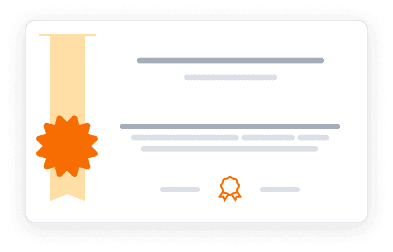Learn about harmful algal blooms, their environmental impact, detection methods, and mitigation strategies.
Learn about harmful algal blooms, their environmental impact, detection methods, and mitigation strategies.
This comprehensive course explores the science of algal blooms and their impacts on ecosystems and human health. Students learn about various algal toxins, their effects, and detection methods. The curriculum covers monitoring techniques, mitigation strategies, and the broader implications for water quality, food safety, and economic impacts. Designed for both scientists and concerned citizens, the course provides detailed insights into this growing environmental challenge.
Instructors:
English
What you'll learn
Understand harmful algal bloom characteristics
Identify various algal toxins and their impacts
Master monitoring and detection techniques
Learn mitigation and control strategies
Assess environmental and economic impacts
Analyze water quality and restoration methods
Skills you'll gain
This course includes:
4.3 Hours PreRecorded video
24 assignments
Access on Mobile, Desktop
FullTime access
Shareable certificate
Get a Completion Certificate
Share your certificate with prospective employers and your professional network on LinkedIn.
Created by
Provided by

Top companies offer this course to their employees
Top companies provide this course to enhance their employees' skills, ensuring they excel in handling complex projects and drive organizational success.





There are 4 modules in this course
This course provides a comprehensive exploration of harmful algal blooms and their impacts. Students learn about different types of algal toxins, monitoring methods, and mitigation strategies. The curriculum covers both theoretical knowledge and practical applications, including water quality assessment, microscopy techniques, and environmental DNA analysis. Special attention is given to the effects on human health, aquatic ecosystems, and economic impacts.
Introduction to Algal Blooms
Module 1 · 4 Hours to complete
Algal Toxins
Module 2 · 11 Hours to complete
Monitoring and Mitigation
Module 3 · 5 Hours to complete
Expanded Impacts of Harmful Algae
Module 4 · 2 Hours to complete
Fee Structure
Payment options
Financial Aid
Instructor
Leading Authority in Algae Biotechnology and Marine Science
Ira "Ike" Levine serves as CEO of the Algae Foundation and Professor Emeritus at the University of Southern Maine, bringing over four decades of expertise in algal sciences and biotechnology. His academic journey includes a B.S. in Biology from Binghamton University, an M.S. in Marine Science from the University of South Florida, and a Ph.D. in Botanical Sciences from the University of Hawaii at Manoa. His entrepreneurial ventures include founding PhycoGen, Inc., an algal biotechnology corporation, and serving as CEO of Algal Aquaculture Professionals. As Executive Director of Professors Beyond Borders, he has worked to expand global access to scientific education. On Coursera, he teaches a comprehensive series of courses including Algae Biotechnology, Algal Blooms and Proliferations, Introduction to Algae, and Introduction to Seaweeds, sharing his extensive knowledge of marine science and algal applications. His work bridges the gap between academic research and commercial applications in algae biotechnology, contributing significantly to the field's advancement through both education and industry innovation
Testimonials
Testimonials and success stories are a testament to the quality of this program and its impact on your career and learning journey. Be the first to help others make an informed decision by sharing your review of the course.
Frequently asked questions
Below are some of the most commonly asked questions about this course. We aim to provide clear and concise answers to help you better understand the course content, structure, and any other relevant information. If you have any additional questions or if your question is not listed here, please don't hesitate to reach out to our support team for further assistance.



